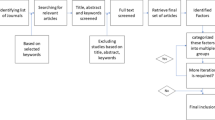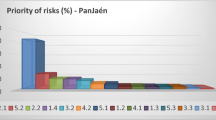Abstract
With e-commerce developing rapidly, banks have begun to cooperate with online platform operators to finance small and medium-sized enterprises (SMEs). However, this process engenders its own unique financial risks. This study highlights and investigates the risks in a four-party supply chain that include a third-party logistics provider, a bank, a B2B platform operator, and SMEs. In an asymmetric information setting, the collusion mechanisms in this four-party online supply chain are also explored. Subsequently, a two-part incentive contract is designed that can reduce the moral hazard faced by the banks while addressing the trade-off between the payments to the platform operator for better credit rating information and the payments to the third-party logistics provider for supervising collateral storage. For further confirmation, a numerical analysis is presented. The results indicate that based on a suitable capital coefficient, the two-part incentive contract may prevent moral hazard in online supply chains. Furthermore, when the line of credit is high, the bank must increase the incentives for the B2B platform operator to avoid default risk and decrease the incentives for 3PL.






Similar content being viewed by others
References
More, D., & Basu, P. (2013). Challenges of supply chain finance: a detailed study and a hierarchical model based on the experiences of an indian firm. Business Process Management Journal, 19(4), 624–647.
Cronin, M. J. (1997). Banking and finance on the internet (pp. 4–17). New York: Wiley.
Kaplan, S., & Sawhney, M. (2000). E-Hubs: The new B2B marketplaces. Harvard Business Review, 78(3), 97–106.
Heng, M. S. H. (2001). Implications of e-commerce for banking and finance. IFIP Advances in Information & Communication Technology, 74(6), 317–328.
Corning, O. (2001). Decision rules for participating in B2B exchanges. In Astrazenec, Basf, Cargill, et al. (Eds.), Operations management roundtable (pp. 14–42). Washington: Corporate Executive Board.
Chen, Y., Yueting, C., Li, X., & Hongbo, S. A. (2012). Novel transaction financing model towards electronic commerce. Amsterdam: 2012 4th Electronic System-Integration Technology Conference (ESTC) (pp. 804–807).
Romero, I., & Tejada, P. (2011). A multi-level approach to the study of production chains in the tourism sector. Tourism Management, 32(2), 297–306.
Bandaly, D., Satir, A., & Shanker, L. (2014). Integrated supply chain risk management via operational methods and financial instruments. International Journal of Production Research, 52(7), 2007–2025.
Qin, Z., & Ding, X. (2011). Risk migration in supply chain inventory financing service. Journal of Service Science & Management, 4(2), 222–226.
Barsky, N. P., & Catanach, A. H. (2005). Evaluating business risks in the commercial lending decision. Commercial Lending Review, 20(3), 3–10.
Wright, J. J. (1988). Accounting: Inventory based lending. Commercial Lending Review, 4(3), 97–99.
Diercks, L. A. (2004). Identifying and managing troubled borrowers in asset-based-lending scenarios. Commercial Lending Review, 3, 38–41.
Meyer, P. A., & Pifer, H. W. (1970). Prediction of bank failures. Journal of Finance, 25(4), 853–868.
Ohlson, J. A. (1980). Financial ratios and the probabilistic prediction of bankruptcy. Journal of Accounting Research, 18(1), 109–131.
Mamdouh, R. (2011). Credit Risk Scorecards: Development and Implementation using SAS. Abu Dhabi: Lulu.
Shearer, A. T., & Diamond, S. K. (1999). Shortcomings of risk ratings impede success in commercial lending. Commercial Lending Review, 14(1), 22–29.
Jokivuolle, E., & Peura, S. (2003). Incorporating collateral value uncertainty in loss given default estimates and Loanto-value ratios. European Financial Management, 9(3), 299–314.
Cossin, D., & Hricko, T. (2003). A structural analysis of credit risk with risky collateral: A methodology for haircut determination. Economic Notes, 32(2), 243–282.
Diercks, L. A. (2004). Identifying and managing troubled borrowers in asset-based-lending scenarios. Commercial Lending Review, 19(3), 38–41.
Basu, P., & Nair, S. K. (2012). Supply chain finance enabled early pay: Unlocking trapped value in B2B logistics. International Journal of Logistics Systems and Management, 12(3), 334–353.
Tirole, J. (1986). Hierarchies and bureaucracies: On the rule of collusion in organizations. Journal of Law, Economic and Organization, 2, 181–214.
Tirole, J. (1996). Collusion and the theory of organizations. Review of Economic Studies, 99(1), 1–22.
Baliga, S., & Sjostrom, T. (1998). Decentralization and collusion. Journal of Economic Theory, 8(3), 196–232.
Laffont, J. J., & Pouyet, J. (2003). The subsidiary bias in regulation. Journal of Political Economy, 88(4), 255–283.
Holmstrom, B., & Milgrom, P. (1994). The firm as an incentive system. American Economic Review, 84(4), 972–991.
Sakai, Y. (2015). Risk aversion and expected utility: the constant-absolute-risk aversion function and its application to oligopoly. 彦根論叢, 403, 172–187.
Acknowledgements
This work was supported by the China NSFC program under Grant No. 71271152; and key project of the Social Science in Tianjin under Grant No. TJGL16-010; and the National Social Science Fund of China program 18BGL269.
Author information
Authors and Affiliations
Corresponding author
Additional information
Publisher's Note
Springer Nature remains neutral with regard to jurisdictional claims in published maps and institutional affiliations.
Appendix 1: Proofs
Appendix 1: Proofs
Proof of Lemma 1
In the formula, \(\frac{1}{{\sqrt {2\pi } \sigma }}\int_{ - \infty }^{ + \infty } {e^{{ - \frac{{(\varepsilon^{2} - \gamma \sigma^{2} )^{2} }}{{2\sigma^{2} }}}} } d\varepsilon\) is the area when the normal distribution mean is \(\gamma \sigma^{2}\), and the variance is \(\sigma^{2}\), the area is 1.
We can conclude \(E(e^{\gamma \varepsilon } ) = e^{{\frac{{\gamma^{2} \sigma^{2} }}{2}}}\).
Proof of Proposition 1
Combining constraints (13) and (14) into the expressions \(t_{1}\) and \(t_{ 2}\), and replacing the bank’s objective function, we can have
Deriving the Eq. (26) for \(v_{1}\) and \(v_{2}\), we have
According to Eqs. (27) and (28), the incentive coefficients of bank payment the B2B platform and 3PL can be obtained as
Proof of Proposition 2
Deriving Eq. (26) for \(a_{1}\) and \(a_{2}\), we have
According to Eqs. (29) and (30), the level of effort of the B2B platform and 3PL can be obtained
From \(a_{1}^{*} > 0\), we can have
Then we can have \(L < \hbox{min} \{ \frac{{\left( {r + 1} \right)c_{2} }}{{A{}_{2}^{2} }},\frac{{\sqrt {c_{1} c_{2} } }}{{A_{1} A_{2} }}\}\) or \(L > \hbox{max} \{ \frac{{\left( {r + 1} \right)c_{2} }}{{A{}_{2}^{2} }},\frac{{\sqrt {c_{1} c_{2} } }}{{A_{1} A_{2} }}\}\).
From \(a_{2}^{*} > 0\), we can have
Then we can obtain the constraint conditions
As \(c_{1} < c_{2}\); \(A_{1} > A_{2}\), we can deduct
So it needs to satisfy: \(L < \hbox{min} \{ \frac{{c_{1} }}{{A{}_{1}^{2} \left( {r + 1} \right)}},\frac{{\sqrt {c_{1} c_{2} } }}{{A_{1} A_{2} }}\}\) or \(L > \hbox{max} \{ \frac{{\left( {r + 1} \right)c_{2} }}{{A{}_{2}^{2} }},\frac{{\sqrt {c_{1} c_{2} } }}{{A_{1} A_{2} }}\}\).
Proof of Corollary 2.
-
(1)
According to \(a_{1}^{*} = \frac{{LA_{1} \left[ {\left( {r + 1} \right)c_{2} - LA{}_{2}^{2} } \right]}}{{c_{1} c_{2} - L^{2} A{}_{1}^{2} A{}_{2}^{2} }}\), numerator and denominator are divided by \(A_{1}\), we can get \(a_{1}^{*} = \frac{{L\left[ {\left( {r + 1} \right)c_{2} - LA{}_{2}^{2} } \right]}}{{{\raise0.7ex\hbox{${c_{1} c_{2} }$} \!\mathord{\left/ {\vphantom {{c_{1} c_{2} } {A_{1} }}}\right.\kern-0pt} \!\lower0.7ex\hbox{${A_{1} }$}} - L^{2} A{}_{1}^{2} A{}_{2}^{2} }}\). From the equitation, \(c_{1} c_{2} - L^{2} A{}_{1}^{2} A{}_{2}^{2} > 0\), which means \(L < \frac{{\sqrt {c_{1} c_{2} } }}{{A_{1} A_{2} }}\), when credit rating capability coefficient \(A_{1}\) is bigger, \(a_{1}^{*}\) is bigger.
Similarly for 3PL, it can be proved that the greater the coefficient, the greater \(A_{2}\) is, and the greater \(a_{2}^{*}\) is.
-
(2)
According to \(a_{1}^{*} = \frac{{L\left[ {\left( {r + 1} \right)c_{2} - LA{}_{2}^{2} } \right]}}{{{\raise0.7ex\hbox{${c_{1} c_{2} }$} \!\mathord{\left/ {\vphantom {{c_{1} c_{2} } {A_{1} }}}\right.\kern-0pt} \!\lower0.7ex\hbox{${A_{1} }$}} - L^{2} A{}_{1}^{2} A{}_{2}^{2} }}\), numerator and denominator are both divided by \(L^{2}\), we can get \(a_{1}^{*} = \frac{{A_{1} \left[ {{\raise0.7ex\hbox{${\left( {r + 1} \right)c_{2} }$} \!\mathord{\left/ {\vphantom {{\left( {r + 1} \right)c_{2} } L}}\right.\kern-0pt} \!\lower0.7ex\hbox{$L$}} - A{}_{2}^{2} } \right]}}{{{\raise0.7ex\hbox{${c_{1} c_{2} }$} \!\mathord{\left/ {\vphantom {{c_{1} c_{2} } {L^{2} }}}\right.\kern-0pt} \!\lower0.7ex\hbox{${L^{2} }$}} - A_{1}^{2} A{}_{2}^{2} }}\). From the equitation, we can find that as loan amount \(L\) increases, and \(a_{1}^{*}\) also increases.
Proof of Lemma 2 The deterministic equivalence of the B2B platform is obtained from Eq. (10)
Finding the derivative of \(a_{1}\): \(\frac{{\partial \hat{w}_{1} \left( {a_{1} } \right)}}{{\partial a_{1} }} = v_{1} LrA_{1} - c_{1} a_{1} = 0\), we can have \(a_{1}^{**} = \frac{{v_{1} LrA_{1} }}{{c_{1} }}\).
Similarly, deriving 3PL’s deterministic equivalence of wealth \(\hat{w}_{2} \left( {a_{2} } \right)\) for \(a_{2}\), we can get \(a_{2}^{**} = \frac{{v_{2} LrA_{2} }}{{c_{2} }}\).
Proof of Proposition 3 According to \((IR_{1} )\) and \((IR_{2} )\), we have
Substituting \(a_{1}^{**}\); \(a_{2}^{**}\); \(t_{1}\); \(t_{2}\) into the bank’s objective function, we have
Solving the problem of maximizing the utility of the banks can be solved as follows:
-
(1)
For any given \(v_{2}\), solved by the optimal trade-off about incentive, we have
$$v_{1} = \frac{{A{}_{1}^{2} \left( {r + 1} \right)}}{{r(A{}_{1}^{2} + \eta_{1} \sigma_{1}^{2} c_{1} )}} - \frac{{LA{}_{1}^{2} A{}_{2}^{2} }}{{c_{2} (A{}_{1}^{2} + \eta_{1} \sigma_{1}^{2} c_{1} )}}v_{2}$$(40) -
(2)
Substituting the Eq. (40) into the objective function of the bank, the solution is
$$v_{2}^{**} = \frac{{c_{2} A{}_{2}^{2} [c_{1} F_{1} - LA_{1}^{4} \left( {r + 1} \right)]}}{{r(c_{1} c_{2} F_{1} F_{2} - L^{2} A{}_{1}^{4} A{}_{2}^{4} )}}$$(41)
Where \(F_{1} = A{}_{1}^{2} + \eta_{1} \sigma_{1}^{2} c_{1}\), \(F_{2} = A{}_{2}^{2} + \eta_{2} \sigma_{2}^{2} c_{2}\).
Substituting Eq. (41) into Eq. (40), we can have
Proof of Corollary 3
Deriving Eqs. (15) and (16) respectively for the loan interest rates \(r\), we have
For \(c_{1} c_{2} F_{1} F_{2} - L^{2} A{}_{1}^{4} A{}_{2}^{4} > 0\), i.e.\(L < \frac{{\sqrt {c_{1} c_{2} F_{1} F_{2} } }}{{A_{1}^{2} A_{2}^{2} }}\) according to the Eq. (43), we can have \(\frac{{\partial a_{1}^{**} }}{\partial r} > 0\), that is, \(a_{1}^{**}\) and \(r\) are proportional. According to the Eq. (44), we can have \(\frac{{\partial a_{2}^{**} }}{\partial r} < 0\), that is, \(a_{2}^{**}\) and \(r\) are inversely proportional.
Similarly, it can be proved for \(L > \frac{{\sqrt {c_{1} c_{2} F_{1} F_{2} } }}{{A_{1}^{2} A_{2}^{2} }}\), \(a_{1}^{**}\) and \(r\) are inversely proportional, while \(a_{2}^{**}\) and \(r\) are proportional.
Proof of Proposition 4 The expected extra revenue that the B2B platform chooses collusion can obtain is
The extra expected gain of no collusion is 0. The B2B platform chooses collusion when the expected benefits of collusion bring about more utility than non-collusion. Therefore, according to the utility function of the B2B platform, the condition that the B2B platform can reject the collusion is
From the above formula (46), the condition can be derived B2B platform to refuse collusion \(K > \frac{{M_{1} - C_{{M_{1} }} }}{1 - g}\).
After observing that the B2B platform has accepted the collusion, 3PL refused to collude on the condition \(- e^{{ - \eta_{2} (M_{2} - C_{{M_{2} }} )}} < - e^{{ - \eta_{2} R}}\), we have \(R > M_{2} - C_{{M_{2} }}\).
Proofs for Sect. 4.3 are similar to those above, so we do not repeat them.
Rights and permissions
About this article
Cite this article
Lin, Q., Peng, Y. Incentive mechanism to prevent moral hazard in online supply chain finance. Electron Commer Res 21, 571–598 (2021). https://doi.org/10.1007/s10660-019-09385-0
Published:
Issue Date:
DOI: https://doi.org/10.1007/s10660-019-09385-0




